Owls are fascinating birds of prey that belong to the order Strigiformes. They are further divided into two distinct families: Strigidae (true owls) and Tytonidae (barn owls). There are many different types of owls in the world.
As raptors, these nocturnal creatures exhibit remarkable hunting skills, captivating calls, and striking features that set them apart from other avian species. With more than 200 species in the family Strigidae and fewer than 20 in Tytonidae, owls are impressively diverse in size, habitat, and appearance.
Across the globe, owls can be found in a variety of habitats—from dense forests to open deserts, farmlands, and fields. Regardless of their environment, these mysterious birds are widely recognized for their specially adapted features, such as large, forward-facing eyes for excellent night vision, a sharp hooked beak, and powerful talons for capturing prey.
Additionally, owls possess a unique facial disk of stiff feathers that help funnel sound toward their ears, thus enhancing their ability to detect prey even in complete darkness. Owls are fascinating creatures belonging to the order Strigiformes, which includes over 200 species in diverse habitats worldwide.
Known for their keen vision, nocturnal habits, and silent flight, these birds of prey play a crucial role in maintaining ecological balance within their respective ecosystems. From the forests of North America to the endangered habitats in other regions, owls display remarkable adaptability and diversity.
Different Types of Owls in the World
Family: Tytonidae (Barn, Grass & Bay Owls)
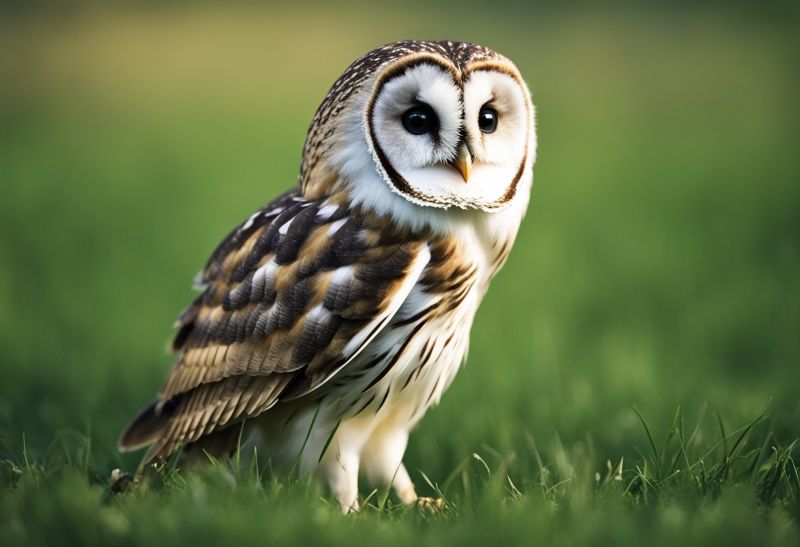
The family Tytonidae consists of two main genera of burrowing owls: Tyto and Phodilus. These owls are distinct from other owl families and can be found in various habitats worldwide.
Genus: Tyto (Barn & Grass Owls)
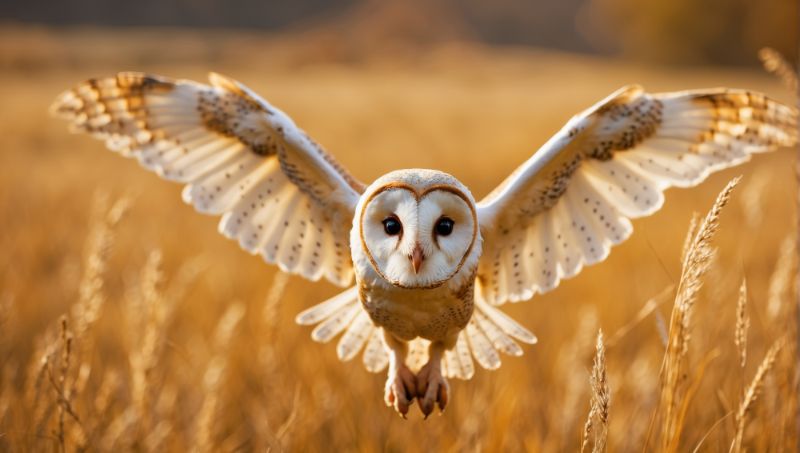
The Tyto genus includes 17 species of barn and grass owls. Barn owls, such as the western screech owl and the Tyto alba, also known as the Common Barn Owl, are renowned for their heart-shaped facial discs and excellent hunting abilities. They predominantly prey on rodents but occasionally target bats, birds, and insects.
Barn owls inhabit various environments, from agricultural areas and grasslands to forests and wetlands. They often build nests in barns, tree cavities, or abandoned structures, providing a safe place to raise their young.
Grass owls, on the other hand, are generally found in subtropical and tropical grasslands, swamps, and savannas. They also have remarkable hunting skills and mainly consume small mammals and birds.
Barn Owl Diet:
- Rodents
- Bats
- Birds
- Insects
Grass Owl Habitat:
- Grasslands
- Swamps
- Savannas
Genus: Phodilus (Bay Owls)

The Phodilus genus contains a single species of Bay Owl. These elusive nocturnal creatures are found primarily in Southeast Asia and parts of Africa. Like other Tytonidae family members, they have a distinctive heart-shaped facial disc but a more rounded appearance.
Bay owls inhabit dense forests where they often build their nests in tree cavities or on the forest floor, using natural vegetation and leaf litter. These owls have a highly specialized diet, primarily feeding on insects, such as beetles and moths, as well as small vertebrates, like rodents and birds.
Bay Owl Diet:
- Insects (beetles, moths)
- Small vertebrates (rodents, birds)
Family: Strigidae (Typical Owls)

Genus: Otus (Scops Owls)
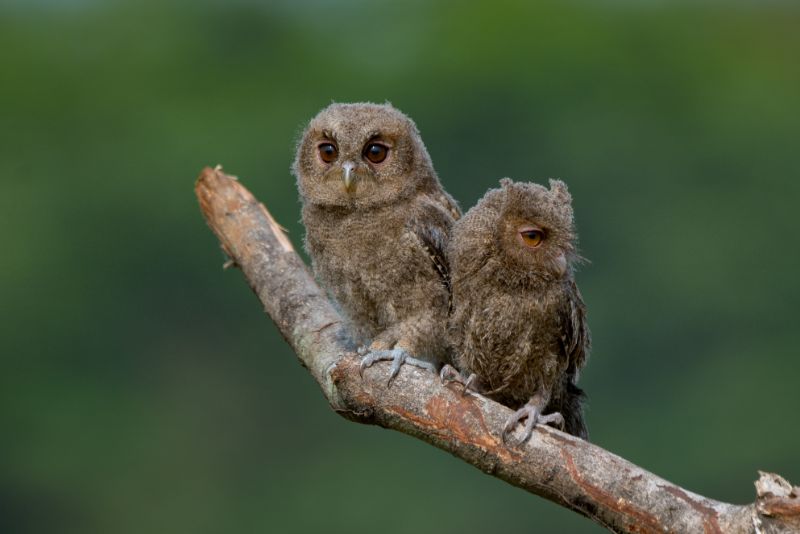
Scops owls are small, nocturnal birds of prey found in various habitats across the globe. Their excellent camouflage and cryptic plumage enable them to blend seamlessly into their surroundings. Owls from this genus are known for their distinctive facial disks and large, forward-facing eyes.
Genus: Mascarenotus (Mascarene Scops Owls)

Mascarene scops owls are endemic to the Mascarene Islands, an archipelago in the Indian Ocean. They have a unique appearance with ear tufts and have adaptations to their island environment.
Genus: Psiloscops (Flammulated Owl)

The flammulated owl (Psiloscops flammeolus) is a small, migratory owl native to the mountainous regions of North America. They combine agility with remarkable hunting skills to catch insects and small mammals.
Genus: Megascops (American Screech Owls)
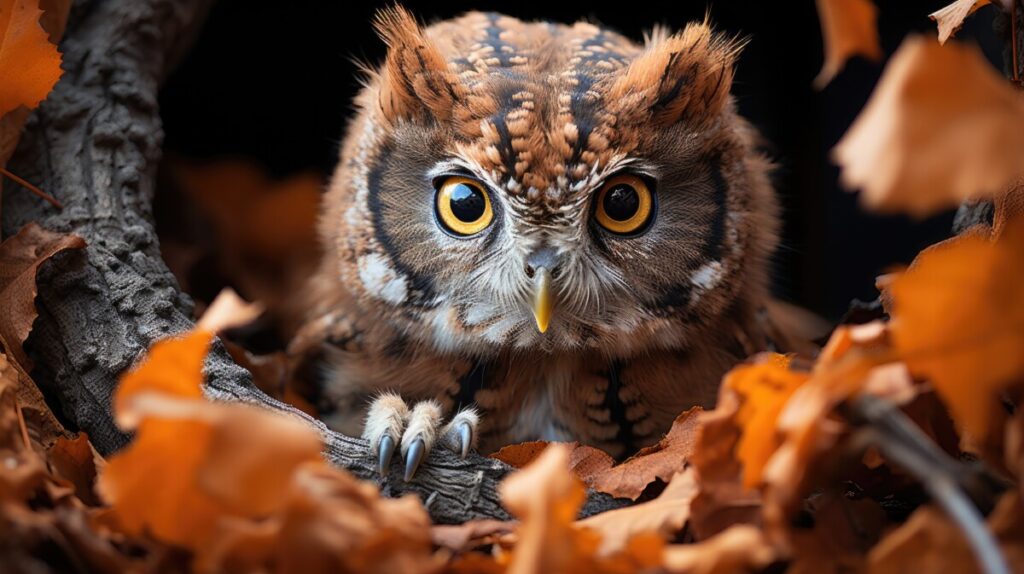
American screech owls are widespread across North, Central, and South America and are known for their striking, patterned plumage. Their highly adaptive nature and varied diet make this genus a successful group of predators.
Genus: Pyrroglaux (Palau Owl)

The Palau owl (Pyrroglaux podargina) is a rare, endemic owl species from the Palau archipelago in the Pacific Ocean. Its unique adaptations include a compact size and specialized diet.
Genus: Margarobyas (Bare-legged Owl)

The bare-legged owl (Margarobyas Lawrence), also known as a bare-shanked barred owl or Cuban screech owl, is a solitary species of eastern screech owl only found in Cuba. This owl is characterized by its featherless legs and preference for dense forests.
Genus: Ptilopsis (White-faced Owls)

White-faced owls across Africa are known for their striking facial features and exceptional hunting skills. They mainly prey on rodents and use their sharp talons to capture and secure their meals.
Genus: Bubo (Snowy, Horned & Eagle Owls)

The Bubo genus includes some of the largest and most iconic owls, such as snowy, horned, and eagle. Bubo owls are efficient predators, often living in open habitats where they can easily hunt various prey.
See Related: Most Populated Animals in the World
Genus: Ketupa (Fish Owls)

Fish owls are found in Asia, and species include the eastern screech owl, the Blakiston’s fish owl, and the brown fish owl. As their name suggests, their primary diet consists of fish captured using keen eyesight and powerful talons.
Genus: Scotopelia (Fishing Owls)
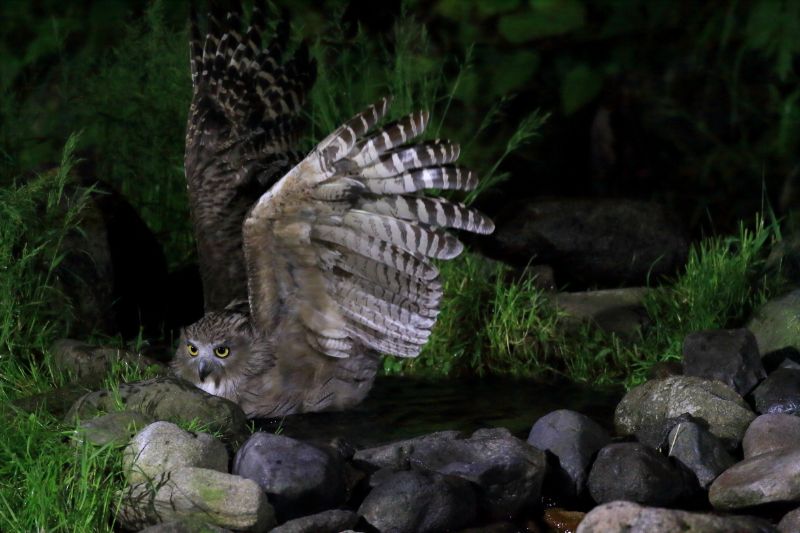
Fishing owls, like the fish owls, primarily prey on aquatic species. However, they inhabit the dense forests of Africa and use a unique hunting technique of diving into the water from perches.
Genus: Pulsatrix (Spectacled Owls)
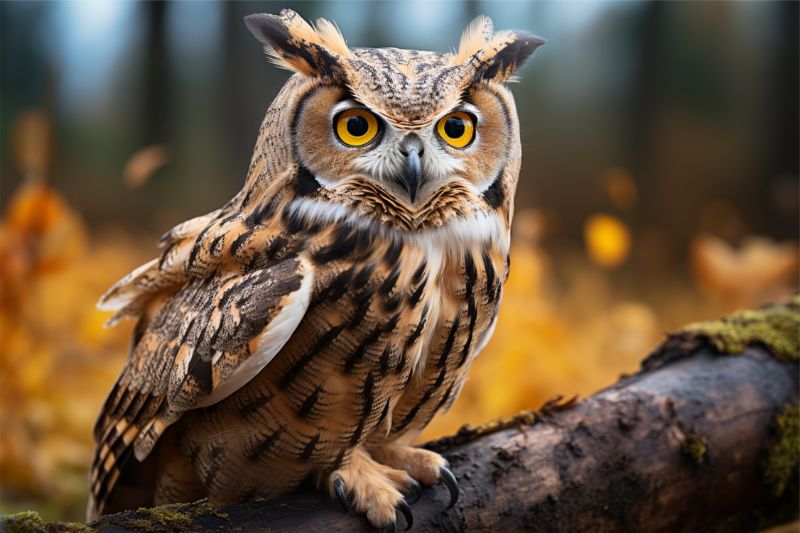
The spectacled owl (Pulsatrix perspicillata) is a large, charismatic owl species native to Central and South America. It is easily recognizable due to its white “spectacles” and dark brown facial markings.
Genus: Strix (Wood Owls)

Wood owls are a diverse group comprising species like the boreal and northern spotted owl. These secretive predators are adept at navigating forested habitats, relying on their keen hearing and silent flight to capture prey.
Genus: Jubula (Maned Owl)

The maned owl (Jubula lettii) is a lesser-known species found in the rainforests of West Africa. This elusive bird is characterized by its prominent tuft of feathers resembling a mane.
Genus: Lophostrix (Crested Owl)

The crested owl (Lophostrix cristata) is endemic to Central and South America, with distinctive tufted “horns” on its head. The species is known for its nocturnal, secretive habits and preference for dense forest environments.
Genus: Surnia (Northern Hawk Owl)

The northern hawk owl (Surnia ulula) is a unique species of eagle owl typically found in the boreal forests of the Northern Hemisphere. Unlike most owls, this bird has a diurnal lifestyle and hunts during daylight hours.
Genus: Glaucidium (Pygmy Owls)
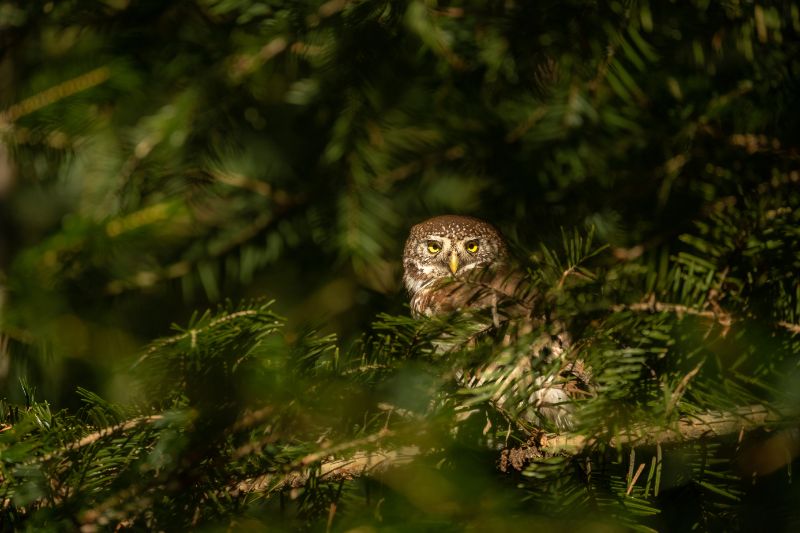
Pygmy owls are among the smallest owl species. They inhabit diverse habitats in North and South America, Europe, Africa, and Asia. Despite their diminutive size, they are efficient predators, capable of taking down prey larger than themselves.
Genus: Xenoglaux (Long-whiskered Owlet)
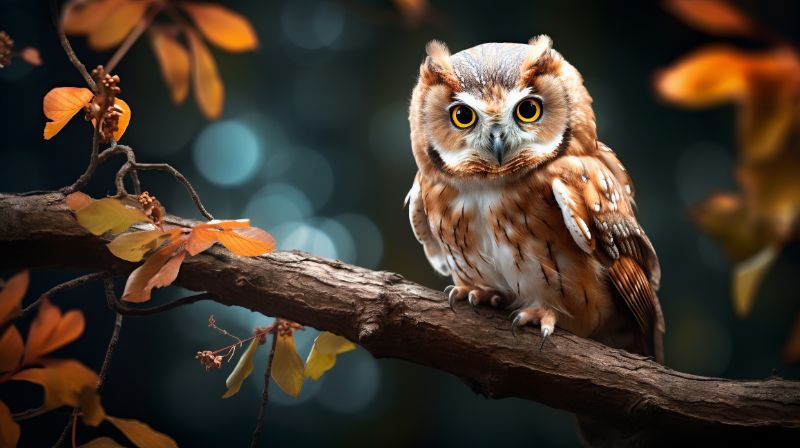
The long-whiskered owlet (Xenoglaux loweryi) is a rare and endangered species restricted to the cloud forests of northern Peru. This small owl is distinguished from great gray owls by its unique “whiskers” and large, expressive eyes.
Genus: Micrathene (Elf Owl)

The elf owl (Micrathene whitneyi) is the smallest owl species in North America. They are primarily insectivores known for their unique nesting habits of occupying woodpecker holes.
Genus: Athene (Little Owls)

Little owls are a group of small, adaptable predators native to Europe, Asia, and parts of Africa. The most well-known species is the Eurasian little owl (Athene noctua).
Genus: Aegolius (Forest Owls)
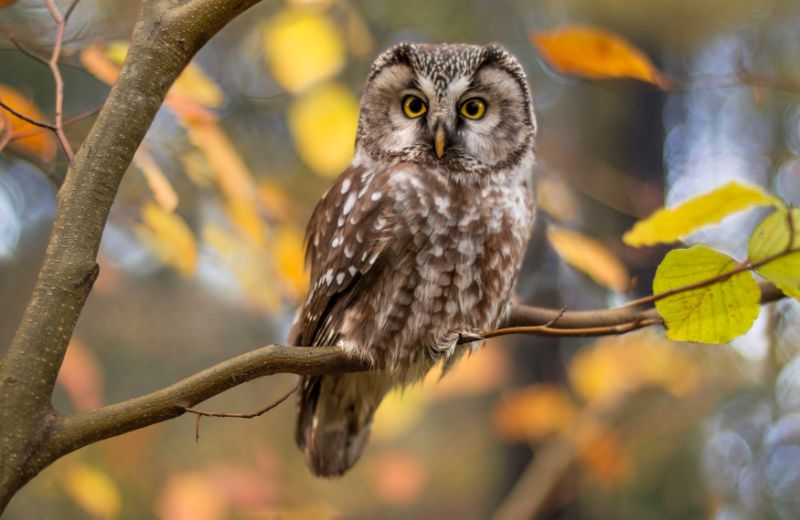
Forest owls, such as the boreal owl (Aegolius funereus), inhabit coniferous forests in the Northern Hemisphere. They are skilled hunters who use their acute hearing and silent flight to locate and capture prey.
Genus: Ninox (Hawk Owls)

Hawk owls are found throughout Australia, Asia, and surrounding islands. They are known for their distinct, hawk-like appearance, diurnal hunting habits, and varied diet.
Genus: Uroglaux (Papuan Hawk Owl)

The Papuan hawk owl (Uroglaux dimorpha) is a rare species found in the rainforests of Papua New Guinea. It is a secretive bird with unique adaptations to its tropical habitat, such as large eyes for increased night vision.
Genus: Sceloglaux (Laughing Owl)

The laughing owl (Sceloglaux albifacies) was a nocturnal predator native to New Zealand but is now considered extinct due to habitat loss and introduced predators.
Genus: Nesasio (Fearful Owl)
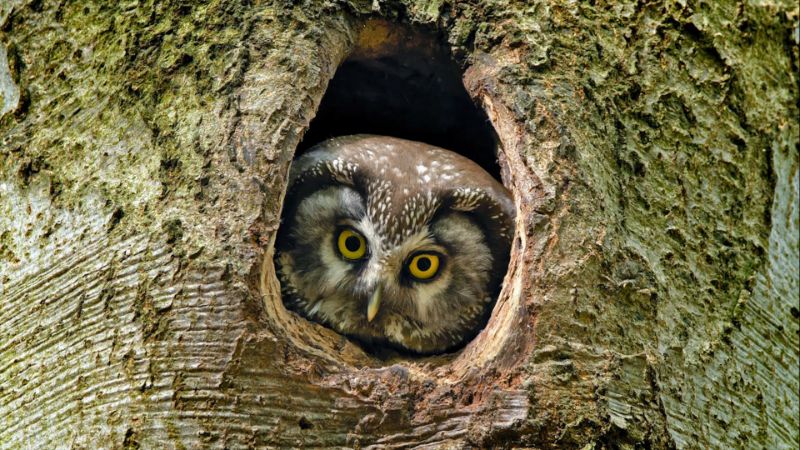
The fearful owl (Nesasio solomonensis) is the largest owl species, an aptly-named species native to the Solomon Islands. Named for the “fearful” expression in its eyes, this bird is a stealthy predator, preying on various small mammals and birds.
Genus: Pseudoscops (Jamaican Owl)

The Jamaican owl (Pseudoscops grammicus) is the only representative of its genus, endemic to Jamaica. Its cryptic plumage enables it to blend into its tropical forest environment while hunting.
Qualities of Owls

Physical Characteristics
Owls are intriguing birds known for their distinctive features. They possess large, forward-facing eyes, often appearing bigger than their heads. Their eyes tend to be flat rather than spherical. Owls also have ear holes, a hawk-like beak, and a flat face surrounded by a facial disc of feathers. Some owls even have ear tufts, adding to their unique appearance. The size of owls varies greatly, from the small Elf Owl to the massive Great Gray Owl.
See Related: Short-Eared Owl: Is This Species Endangered?
Cognitive Abilities
Owls are often perceived as wise and intelligent creatures, but their primary cognitive strength lies in their keen hunting abilities. Their extraordinary hearing is facilitated by facial discs, which can adjust to focus sounds onto their asymmetrically placed ear cavities.
In addition, owls have highly flexible necks with 14 vertebrae, enabling them to rotate their heads up to 270 degrees to monitor their surroundings.
Camouflage Abilities
Camouflage is crucial in an owl’s life, as it helps it hunt prey and avoid predators. Their plumage often matches the colors and patterns of their habitat, making them nearly invisible. Furthermore, the soft feathers of owls enable near-silent flight, which helps them stalk their prey undetected.
Hunting and Feeding
Owls are powerful predators with a variety of hunting techniques. They are equipped with sharp talons for catching and holding onto prey, often dispatching it with a swift bite to the neck. They have been known to catch and eat various animals, from insects to small mammals and sometimes even other birds.
Habitats of Owls
Owls can be found in diverse habitats across North America, including the United States, Mexico, and Canada. They inhabit woodlands, grasslands, and tropical environments, with their distribution largely dependent on food availability and nesting sites.
Unique Owl Species
There are numerous owl species to be found across the globe, each with their unique features and habitats. States or provinces may have endemic species, such as the chocolate boobook, ochre-bellied boobook, and cinnabar boobook.
Other owl species, like the barred owl, the rufous owl, the powerful owl, and the barking owl, display distinct physical and behavioral traits. North America is home to a great diversity of owl species, including the Great Horned Owl, which is renowned for its large size and ear tufts.
Related Resources:
- Most Beautiful Birds in the World
- Most Interesting Birds in the World
- Is a Bird a Consumer? Here’s What to Know


